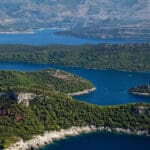Dalmatia is a historic region on Croatia’s Adriatic coast encapsulating a fabulous mosaic of ancient cities, cultural heritage, and breathtaking landscapes. This blog explores the rich past and vibrant present of Dalmatia through its four major cities—Split, Zadar, Šibenik, and Dubrovnik—and extends beyond to often overlooked gems like the islands of Korčula and Hvar, and the archaeological site of Salona.
Join us as we uncover the architectural marvels, strategic fortresses, and the enduring spirit of Dalmatia. And remember, if you’re traveling in Dubrovnik, there’s no better way to explore the city’s cultural landscape and areas of extraordinary natural beauty than by joining one of Rewind’s Private Guided Boat Tours from Dubrovnik or Day Trips from Dubrovnik. From adventure experiences to food tastings, we have options for every type of traveler.
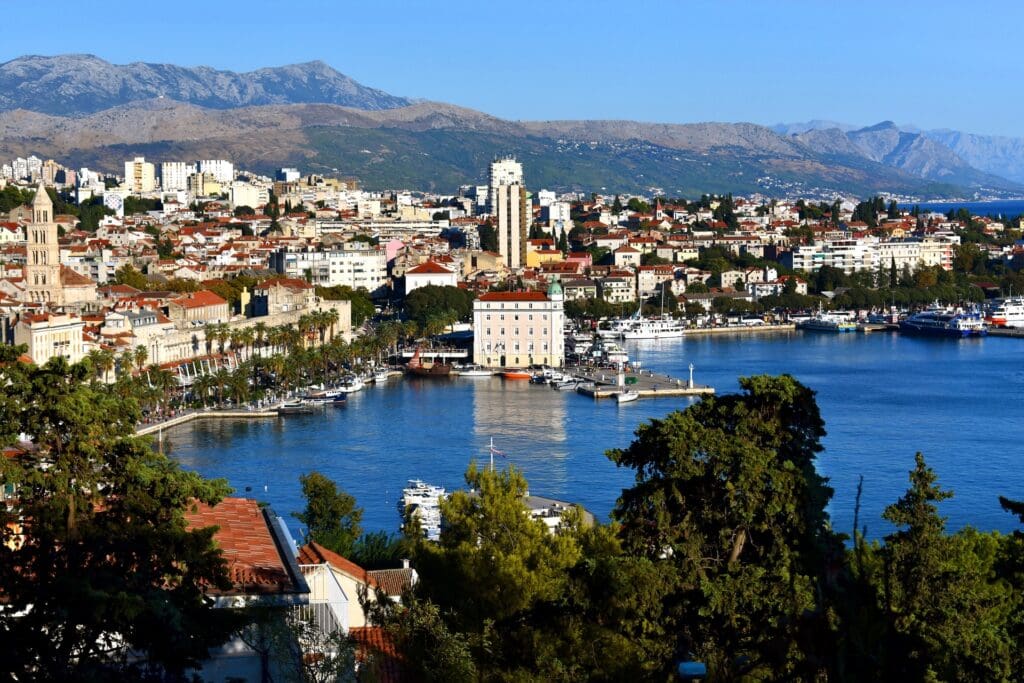
Split
Split is not only a gateway to the Adriatic islands but also a veritable jewel box of epic ancient architecture. The city’s history is deeply intertwined with the remnants of Diocletian’s Palace, a monumental complex that has remarkably withstood the ravages of time in near pristine condition.
Diocletian’s Palace: A Living Museum
Constructed between the late 3rd and early 4th centuries A.D., Diocletian’s Palace serves as the beating heart of Split. Its walls, now partly ruins, still boast the original layout, with the sprawling complex encompassing residential quarters, a temple, and a mausoleum.
Today, the palace is an open site where visitors freely wander through its ancient gates—Golden, Silver, Iron, and Bronze—and explore the bustling market stalls in the subterranean halls of the former emperor’s central hall.
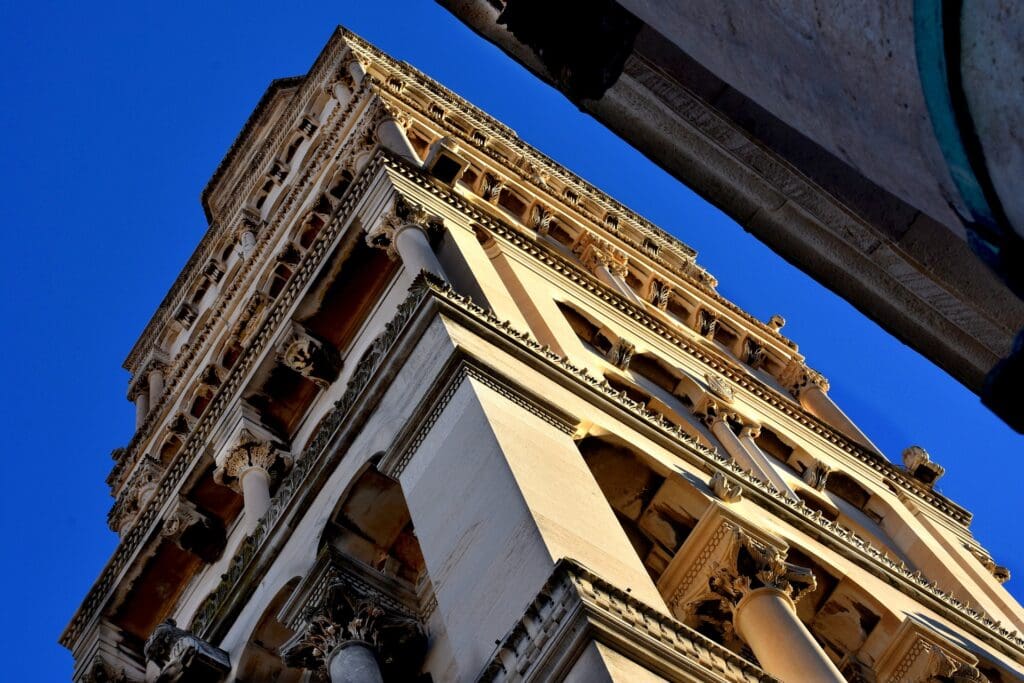
Cathedral of Saint Domnius: Mausoleum and Sacred Site
The Cathedral of Saint Domnius stands as one of the most intact structures of Roman engineering. Originally built as Emperor Diocletian’s mausoleum, it had been transformed into a church, a symbolic victory of Christianity over the pagan emperor, by the 5th century. Its exterior showcases a colonnade of 24 ancient columns, while the interior houses a series of Corinthian columns and a high frieze depicting the emperor and his consort.
The bell tower added between the 13th and 16th centuries offers breathtaking views over Split, accessible via a challenging ascent through ancient staircases.
Split City Museum: Chronicles of the City
Based in a 15th-century Gothic palace, the Split City Museum captures the essence of the city’s evolution with its extensive collection of art, historical documents, and maps. The museum’s facade serves as a taster for the treasures within, presenting a well-curated glimpse into Split’s cultural and historical development.
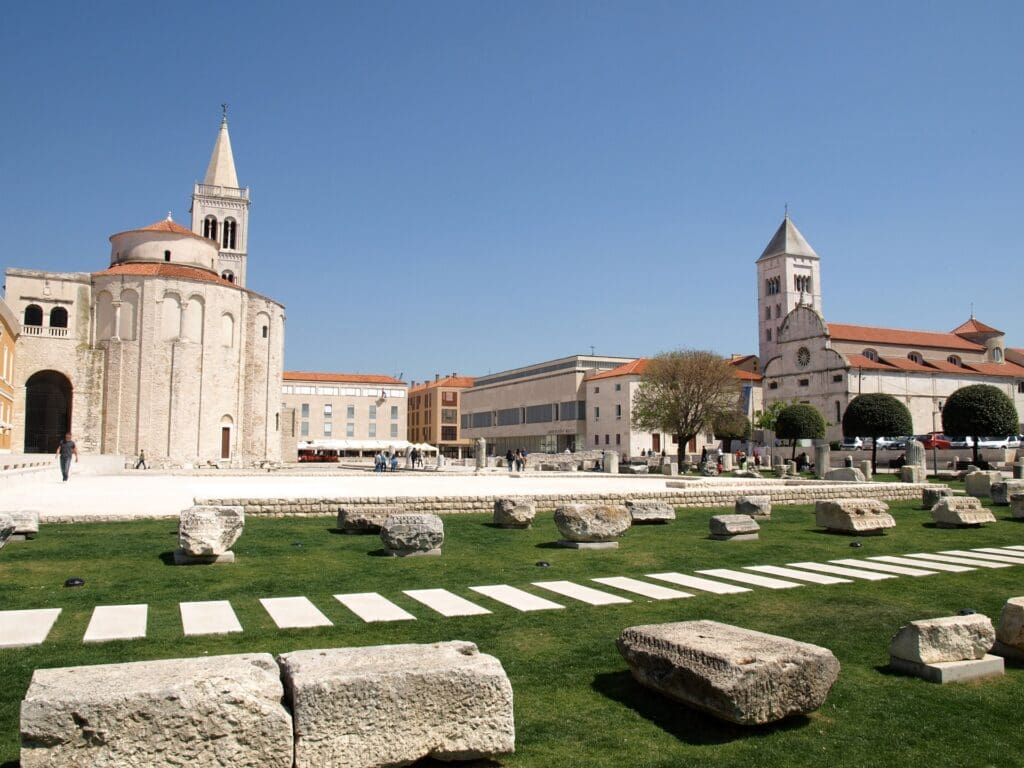
Zadar
Zadar, a city where history collides with modernity, offers a charming mix of ancient heritage and contemporary cultural life. Positioned on a peninsula, Zadar’s timeline stretches from Roman to present times, each era leaving a distinct mark.
Roman Forum and Church of St. Donatus
At the heart of Zadar’s Roman relics is the Roman Forum, founded by the first emperor Augustus. Nearby stands the Church of St. Donatus, a monumental circular building from the 9th century, emblematic of Byzantine architecture in Croatia. This church, built using stones from the forum, underscores the architectural recycling typical of historic Zadar.
Modern Marvels
Zadar also embraces innovation with installations like the Sea Organ and Sun Salutation. The Sea Organ, an architectural sound art object, uses underwater pipes played by the sea waves, producing a mesmerizing melody. Adjacent, the Sun Salutation consists of solar-powered LEDs that create a spectacular light show from sunset to sunrise, reflecting the solar spectrum and engaging with the rhythmic waves of the Sea Organ.
This fusion of ancient structures and innovative art installations encapsulates Zadar’s identity: a city deeply rooted in its past yet dynamically engaging with the present.
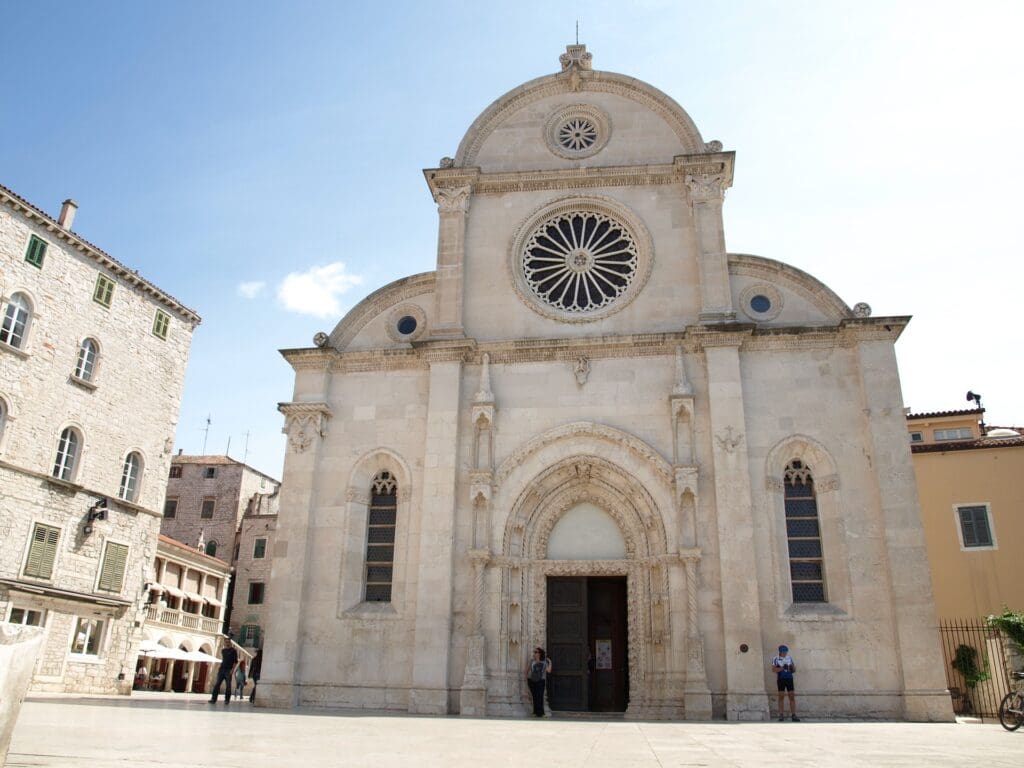
Šibenik
Šibenik, known for its fortifications and Gothic-Renaissance architecture, stands as a testament to its strategic historical importance. The city, cradled by the Adriatic Sea and the Krka River, presents a harmonious blend of natural and architectural beauty.
Šibenik Cathedral: UNESCO Heritage Site
At the center of Šibenik’s architectural treasures is the Cathedral of St. James, recognized as a UNESCO World Heritage site. Constructed during the 15th and 16th centuries, this cathedral is renowned for its fusion of Gothic and Renaissance elements and its entirely stone-built structure, including a remarkable dome.
St. Michael’s Fortress
Overlooking the city, St. Michael’s Fortress has transitioned from a medieval defensive structure to a vibrant cultural venue. Its open-air theater, set against panoramic views of Šibenik and the Adriatic, hosts a variety of performances, connecting the historical with contemporary culture.
Adjacent to Šibenik, the Krka National Park offers a natural escape with its famous waterfalls and trails, enriching the cultural journey with ecological exploration.
Dubrovnik: Pearl of the Adriatic
Dubrovnik, once a formidable city-state, remains enwrapped in its formidable walls which have protected it across centuries. Its well-preserved fortifications and architectural grandeur not only illustrate its historical significance but also showcase its enduring beauty.
City Walls and Fortresses
Encircling the old town, Dubrovnik’s massive stone walls, completed in the 16th century, are among the best-preserved in Europe. Strategic fortresses like Lovrijenac and Minčeta tower over the Adriatic, providing unmatched views and a glimpse into the city’s defensive innovations. Walking atop these walls offers a unique perspective of the city’s layout and architectural achievements.
Rector’s Palace
The Rector’s Palace, blending Gothic and Renaissance styles, served as the seat of the Rector of the Republic during the city’s golden age. Today, it houses a museum displaying artifacts that narrate Dubrovnik’s rich administrative and cultural history. The palace’s harmonious courtyards and meticulously restored chambers reflect the sophistication of Dubrovnik’s past rulers.
Many of these historical sites have recently been used as filming locations for the hit HBO show, Game of Thrones. To explore the Dubrovnik sites used in the show, book a place on our Game of Thrones Tour in Dubrovnik.
Beyond the Cities: Dalmatia’s Hidden Treasures
Dalmatia’s allure extends beyond its famous cities to magical islands that offer peaceful beauty and charming historical settings.
Islands of Korčula and Hvar
Korčula and Hvar are gems in the Adriatic, known for their lush landscapes and historic towns. Korčula claims a storied past with medieval walls and ancient traditions, reputedly the birthplace of Marco Polo.
Hvar, meanwhile, boasts a Renaissance square dominated by the Cathedral of St. Stephen and a fortress with sweeping views of the Pakleni Islands.
If you’d like to travel from Dubrovnik to the islands of Hvar and Korčula in comfort and style, book one of our Speedboat Transfers from Dubrovnik.
Or, for a guided island-hopping adventure, join us for our popular Full-Day Tour of the Elaphiti Islands.
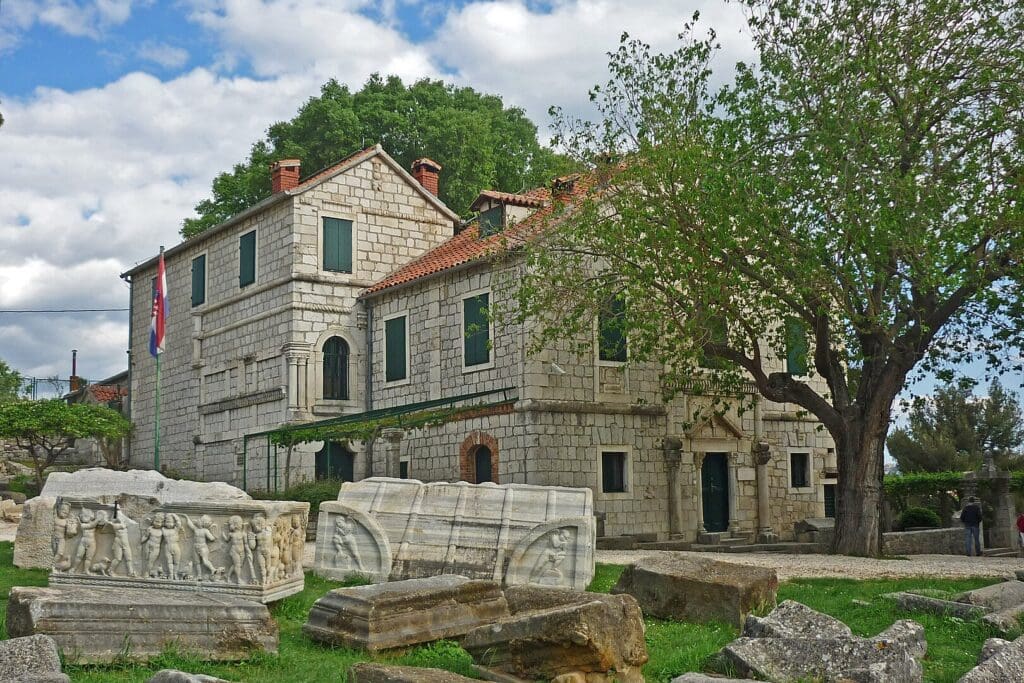
Archaeological Site of Salona
Just outside Split lies Salona, once the capital of the Roman province of Dalmatia. Today, its ruins provide insight into early Christian practices and Roman urbanism. Visitors can explore the amphitheater, basilicas, and public baths that map out an ancient bustling metropolis.
We hope the above destinations have given you plenty of ideas for your own travels in the magnificent region of Dalmatia!
If you have any questions, please get in touch.

